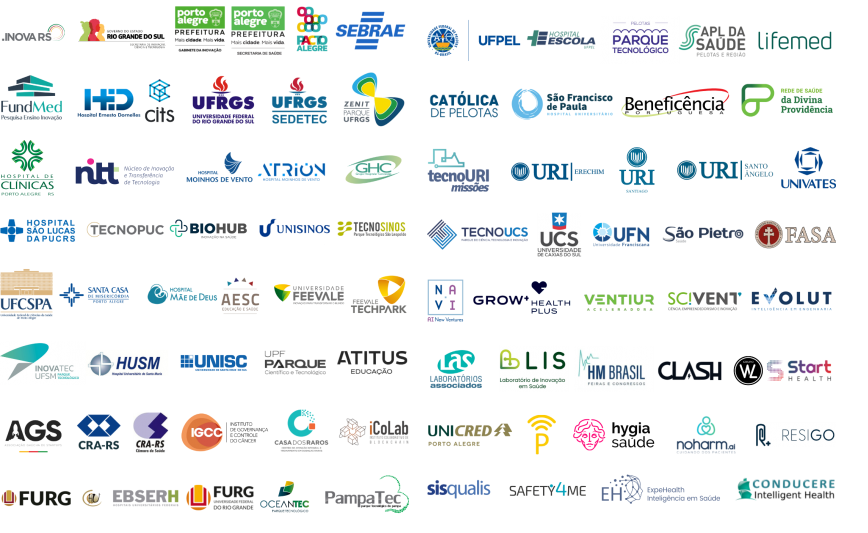Life Sciences
The Health Technologies segment has high technological intensity. The global behavior pattern indicates that this industry invests more than average in innovation. In Brazil, according to the National Bank for Economic and Social Development (BNDES), the sector allocates approximately twice the national average to efforts in innovative activities. Furthermore, the active companies have close relationships with other industrial segments, enabling the addition of value in different production chains, such as polymers, high-performance engineering plastics, printed circuit boards and fine mechanics, among others. Because of this, Rio Grande do Sul is betting on the health industry as a vector of economic and technological development.
In Brazil, the healthcare market has been growing rapidly. The constitutional right to universal and free access to healthcare, institutionalized in the Unified Health System (SUS), means that there is significant and constant public spending in this area. In 2021, the value of medical device production in the country was US$5.8 billion, of which US$1 billion was destined for the foreign market and US$4.8 billion for the domestic market. As the Apparent Consumption of Medical Devices that year was estimated at US$ 10 billion, imported products represented 52% of the total consumed, which represents a deficit sector of US$ 4.2 billion in the trade balance (ABIMO).
At the end of 2021, Rio Grande do Sul had 3,559 jobs registered in the activities of manufacturing electromedical and electrotherapeutic devices, irradiation equipment, instruments and materials for medical and dental use and optical articles. Almost half of the jobs are concentrated in two municipalities: the capital, Porto Alegre (32.7%), and Pelotas (16.8%), in the south of the state, where the Health Local Productive Arrangement (APL) is established.
According to data from the Ministry of Health (2023), the hospital network in Rio Grande do Sul currently has approximately 29.8 thousand total beds, including clinical, surgical and complementary beds. Of this total, around 3,300 are in intensive care units. The hospital complex in Rio Grande do Sul stands out for providing patients with highly complex procedures, being a national reference in organ transplantation, bariatric and metabolic surgery, cardiac surgery, interventional cardiology with implant devices, oncology, orthopedic implants and minimally invasive surgeries, among others. . In total, there are 316 hospitals in the State, 2,726 basic health units, 324 emergency care units, among other auxiliary structures. Throughout 2023, the Rio Grande do Sul health system has been providing approximately 34 thousand monthly services. The latest data released for Brazilian states places RS as the second with the highest coverage, with 2.58 beds/1000 inhabitants in February 2022 (DATASUS/CNES), behind only Goiás, with 2.62 beds/1000 inhabitants . According to the Regional Council of Medicine (Cremers), around 2,750 new doctors request registration with the body annually (data from 2022).
In 2022, the SCH - South Collab Health network was created – an initiative that unites universities, hospitals and entities in Rio Grande do Sul that aim to encourage and strengthen innovation initiatives in the health sector in the State. Currently, the collaborative group has 68 institutions and their innovation parks and centers. The presence of public and private hospitals, laboratories, research and development centers for new health technologies, universities and different public spheres enables the exchange of information and technical cooperation between different health agents and companies in the sector.
South Collab Health members

Rio Grande do Sul has 2 of the 15 best medical courses in the country (RUF 2019) and 13 of the 100 best-rated hospitals in Brazil (Newsweek World's Best Hospitals 2023), with emphasis on Hospital Moinhos de Vento, which also appears ranked in 115th position globally.
In addition to this environment, which enables business development and the installation of new companies, demographic and behavioral changes are observed that will require new solutions. The growth of preventive medicine stands out, resulting from the increase in average life expectancy, and the monitoring and provision of medical services remotely. These new realities will require new suppliers of medicines, equipment and software, who will find a favorable environment for their development in the State of Rio Grande do Sul.

According to IBGE, life expectancy at birth in RS, for both sexes, went from 72.4 in 2000 to 78.3 in 2018. Demographic evolution studies show that, in Rio Grande do Sul, the demographic transition began earlier in relation to most Brazilian states and has become more evident in recent decades, characterized by the rapid absolute and relative increase in the adult and elderly population. In relation to sex, these differences become even more evident when considering the greater life expectancy at birth of women, which in 2018 reached 81.6 years, while that of men was 74.9 years. As a result, the number of women is greater than the number of men, especially in older age groups.
Check out the complete list of medical devices already in operation in the Rio Grande do Sul health system by clicking here .
Check out ABIMO's sector report here .
Sector Opportunities
Technologies for solutions for population aging and chronic and degenerative diseases.
Nanotechnology and nanomedicine: there are around 30 research groups at universities in Rio Grande do Sul on the subject and there is a great demand for technological and industrial solutions.
Regenerative medicine: around 15 research groups at universities in Rio Grande do Sul on the subject.
Cardiology: coronary stents, especially self-expandable ones.
Neurosurgery: programmable pressure valves; thinner platinum wires (0.3 mm).
Orthopedics: development of coatings made up of certain substances – amorphous carbon, titanium nitride, zirconia, alumina, polymeric materials – to cover components; manufacturing of implants made of radiolucent polymers instead of metals.
Rehabilitation area: manufacturing of prostheses related to the mobility and movement of arms, hands and fingers.
Dentistry: longer-lasting prostheses and implants – ceramics and micro or nano-reinforced resins; drills with special coatings, composed of synthetic diamond; highly complex miniaturized electronic components.
Telemedicine: software for recognizing patterns for care and pre-reports; specific hardware to facilitate remote consultation; health teaching platforms.